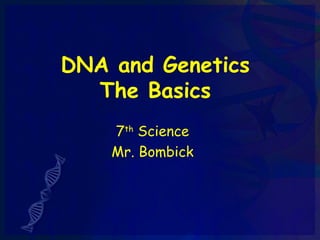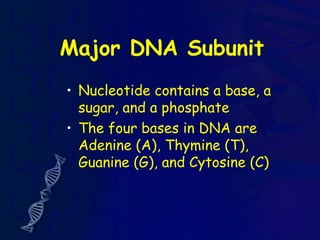DNA contains genes that code for proteins. DNA is made up of nucleotides containing bases (A, T, G, C) bonded together. The double helix structure of DNA is maintained by hydrogen bonding between complementary bases (A-T and G-C). DNA is compacted and organized into chromosomes. Mutations in genes can alter protein production. DNA replicates before cell division to produce two identical DNA molecules. Meiosis reduces the chromosome number by half to produce gametes (eggs and sperm) for sexual reproduction and genetic variation in offspring.
















